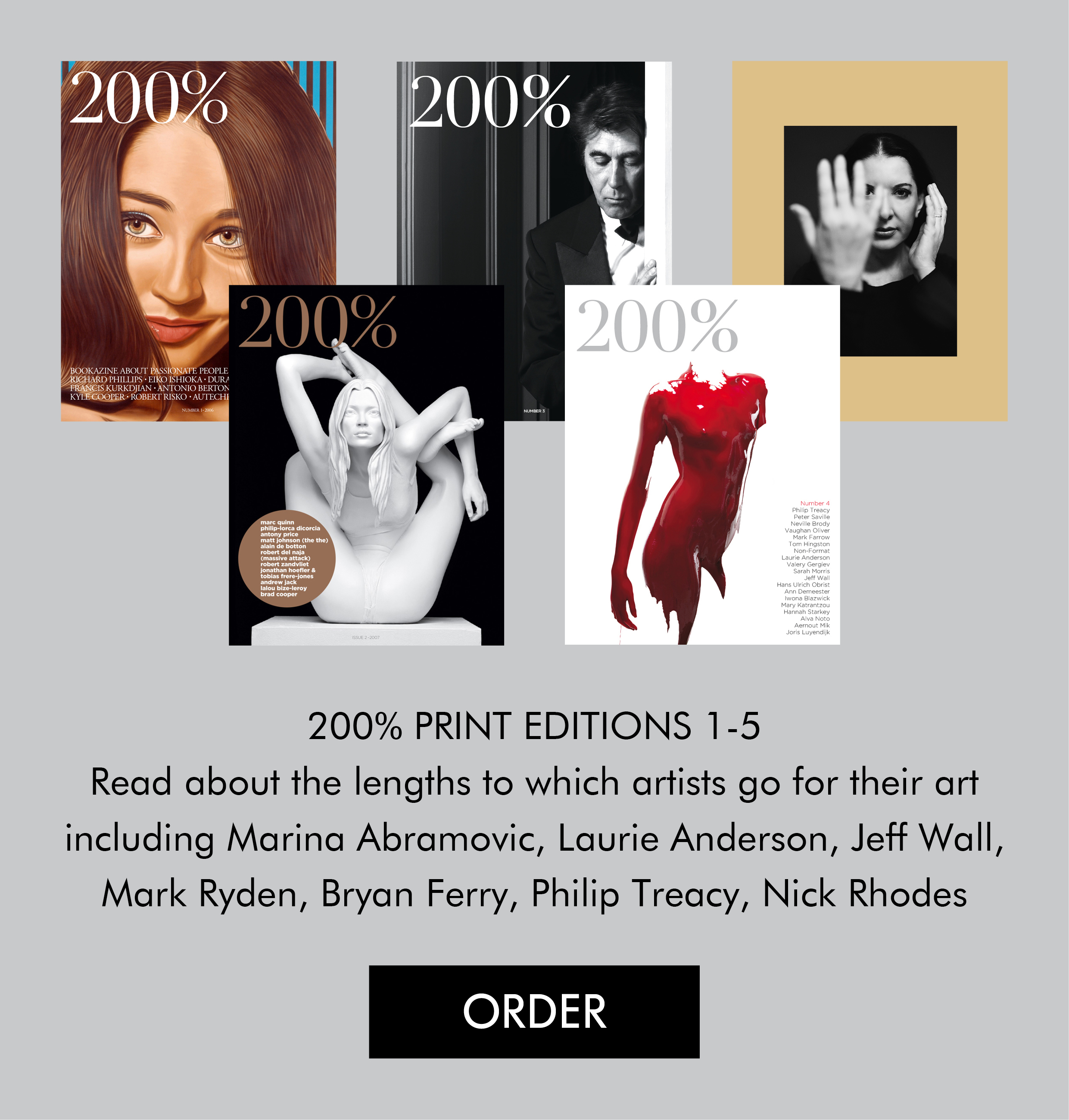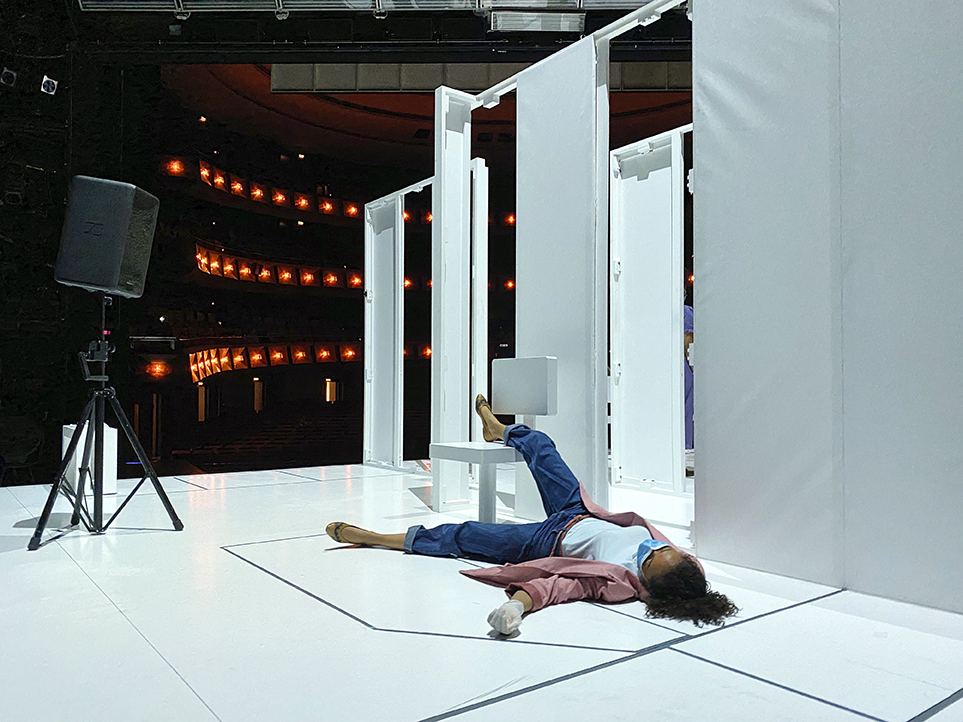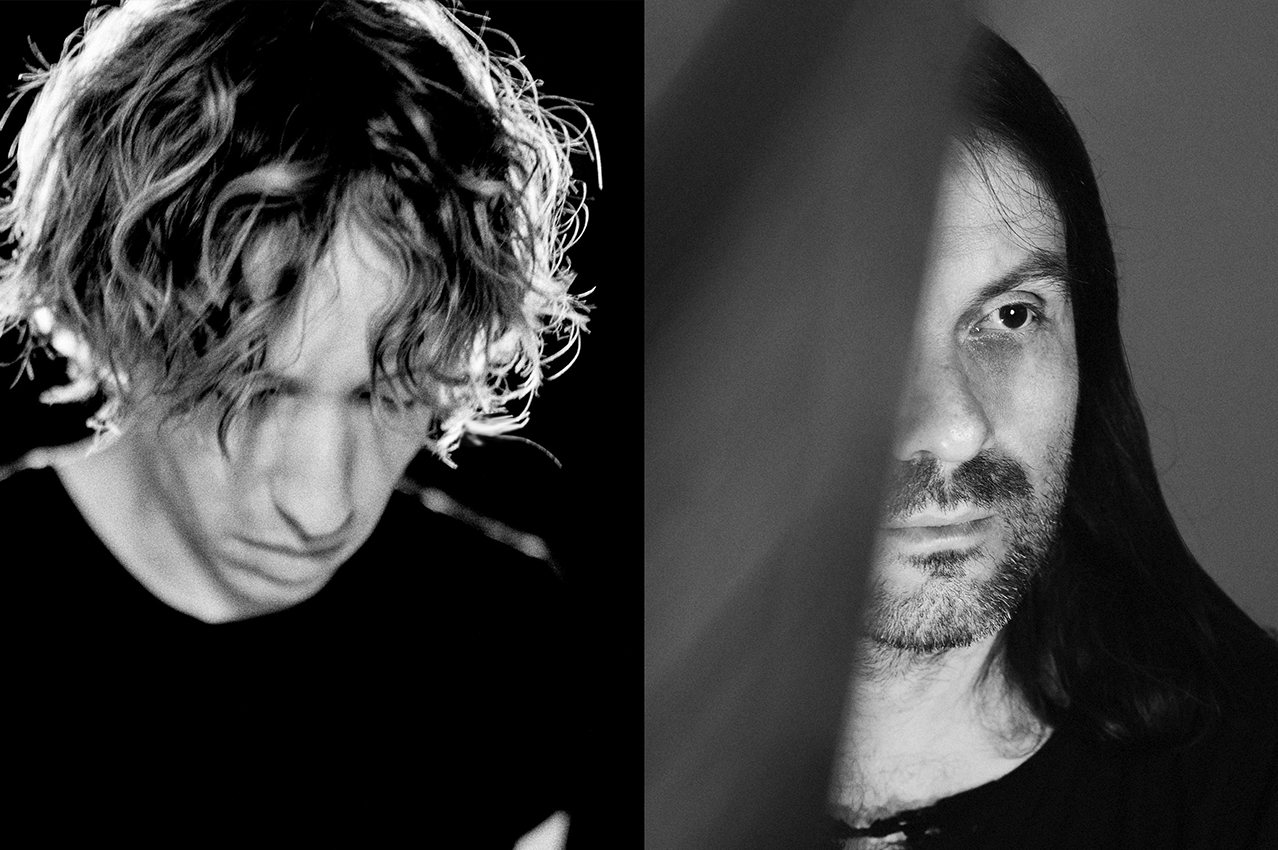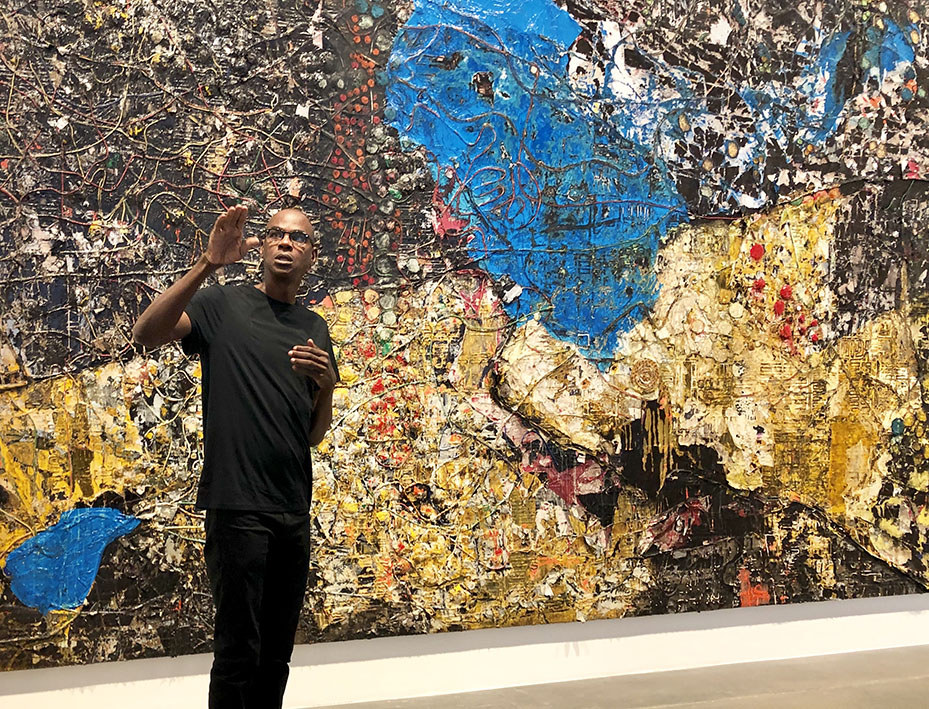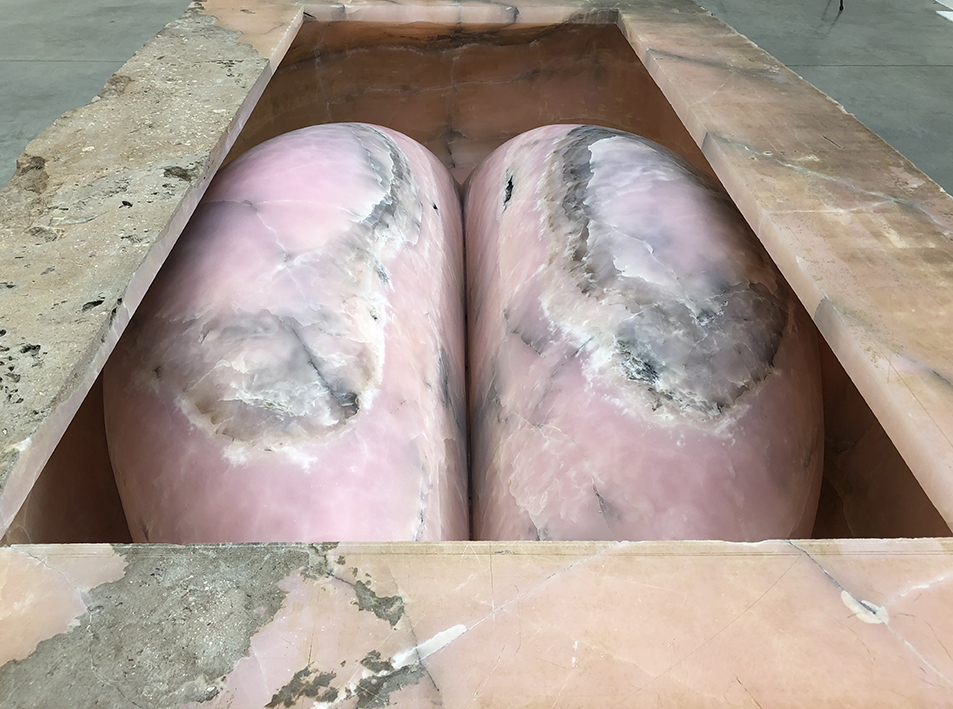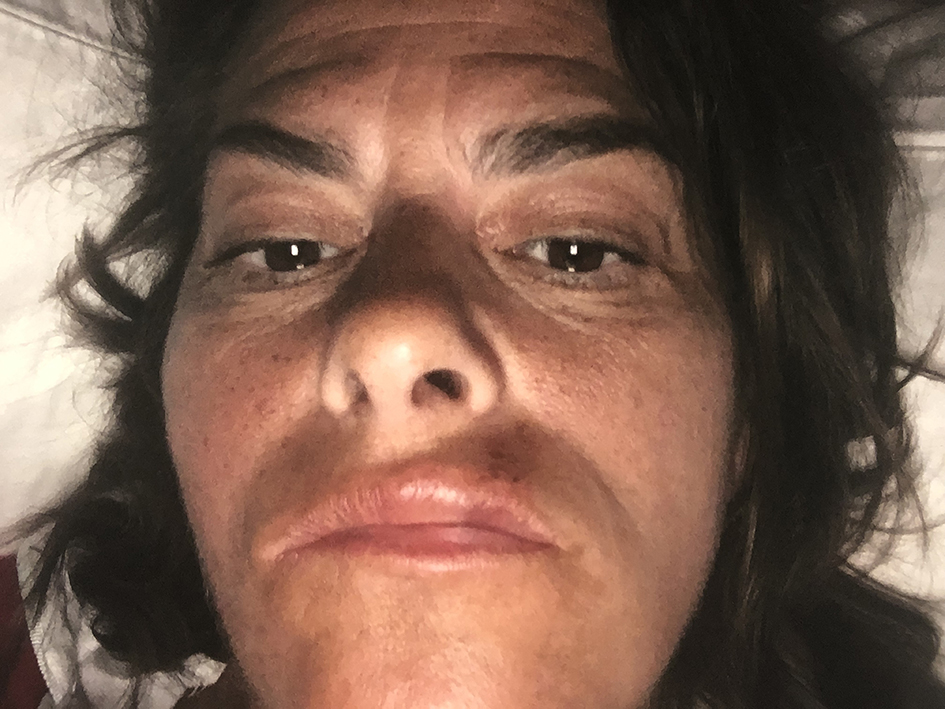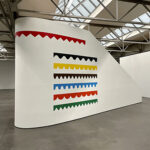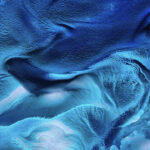 Artist John Currin talks about ‘the tools of his trade’.
200%: Do you have a favourite brush?
John Currin: My favourite is similar to Richard’s [Phillips], the Da Vinci Maestro hog bristle. My next favourite is probably my Rafael mongoose brushes. I also use sable brushes such as Escoda, Manet & Da Vinci – but they’re not my favourites.
200%: What do you like about the hog bristle?
John Currin: You can do a lot with it: in fact, you can almost do a whole painting with it. They’re very big, but you can do a surprising amount of detail with it.
200%: So you have a good feeling with that brush?
John Currin: Yes. There is only one problem in that Richard goes out and buys them out as soon as they come into the store. I’m pissed at him for that [laughs].
200%: Do you especially maintain them, clean them?
John Currin: They wear out so fast it is just better to buy a new one. They get ruined very quickly, get worn down. When they’re new they’re fantastic, and good for about four days of work; when they become ‘old’, you use them for other things.
My assistant, Suzanne [Bennett], cleans my brushes. Even when they’re clean, though, they’re never the same as the first time you use them. There is nothing like a brand new brush. They are 100 dollars each. One of the nice things of being successful is that you can buy tons of brushes.
200%: You do you have a favourite knife with which you paint?
John Currin: Yes. It’s an inexpensive knife that I’ve had since I was 25 years old, but it’s become my favourite. I have used it so much that the steel is worn into a very nice shape. It’s a very nice knife. I keep trying to get another one, that will be just as good, but they never are. There is something lucky about this one.
200%: What kind of paint do you use?
John Currin: I use a combination of things: regular old Winsor Newton; Robert Doak in Brooklyn makes really lovely paint; Old Holland Classic – that’s also a very nice paint; Blockx, that’s a Dutch one, and a Japanese company Holbein: they make very good paint and they make good palette knives, good metal things, very expensive.
200%: What do you like about these paints?
John Currin: It’s consistent, it’s good paint. Different brands do different colours best for example, Winsor Newton have very nice colours.
200%: How do you mix your paint?
John Currin: On a palette. Unlike other artists I don’t put my paint on a glass palette.
200%: In which position do you paint?
John Currin: I paint at an easel.
200%: Who stretches your canvases?
John Currin: I used to do it myself and then I hurt my thumb – I have arthritis in my thumb – so I don’t do it anymore. You have to be strong and I’m not strong enough anymore. Now Simon Liu stretches my canvases. They might do it by machine, but they do a fine job, so I’m happy with that. They glue the canvases with a rabbit skin glue to coat them and then they deliver them to my studio.
200%: And do you prime your canvases yourself?
John Currin: Yes, I hate doing it, but nobody else does it well, so I like to put the ground on myself, although my assistant, has done some and she has gotten pretty good at it. Also, the assistant of my wife [Rachel Feinstein], has also done some canvases for me and he, too, started getting good at it.
200%: What is the craftsmanship of priming a canvas?
John Currin: When you prime a canvas you put the paint on with a knife, similar to a spatula that a plaster worker uses. It takes a lot of skill and experience to do that properly. I have a certain preference how to prime my canvases and it’s important that the mix that is put on the canvas is right. Mine consists of white lead with a little bit of dry pigment in it and marble dust, like a talcum powder. It becomes this ugly grey blob of paste and you put it on the canvas with a knife.
Priming canvases is very time-consuming. When I’m painting as I would like to have a hundred canvases ready for me, I have to prepare a lot. I like my canvases to dry for a year before I use them.
200%: Working with paint and how to use it, has it been a trial and error process?
John Currin: Yes. I know by now what colour to use. If you’re going to make something yellow, there is a number of ways to make something yellow; you can just use yellow paint, but you can also paint it white and stain it yellow, or paint something red and paint the yellow over the red. It all makes different kinds of yellows, different character and that’s a big thing for me – how to make a colour look right. I don’t really paint opaquely. A lot of times, I probably should; I just don’t mix the colour on my palette and paint it on the canvas. For instance, with flesh tones, I first paint a ‘funny’ colour, put another colour over that and they combine transparently which makes this third colour, the colour that I want.
Artist John Currin talks about ‘the tools of his trade’.
200%: Do you have a favourite brush?
John Currin: My favourite is similar to Richard’s [Phillips], the Da Vinci Maestro hog bristle. My next favourite is probably my Rafael mongoose brushes. I also use sable brushes such as Escoda, Manet & Da Vinci – but they’re not my favourites.
200%: What do you like about the hog bristle?
John Currin: You can do a lot with it: in fact, you can almost do a whole painting with it. They’re very big, but you can do a surprising amount of detail with it.
200%: So you have a good feeling with that brush?
John Currin: Yes. There is only one problem in that Richard goes out and buys them out as soon as they come into the store. I’m pissed at him for that [laughs].
200%: Do you especially maintain them, clean them?
John Currin: They wear out so fast it is just better to buy a new one. They get ruined very quickly, get worn down. When they’re new they’re fantastic, and good for about four days of work; when they become ‘old’, you use them for other things.
My assistant, Suzanne [Bennett], cleans my brushes. Even when they’re clean, though, they’re never the same as the first time you use them. There is nothing like a brand new brush. They are 100 dollars each. One of the nice things of being successful is that you can buy tons of brushes.
200%: You do you have a favourite knife with which you paint?
John Currin: Yes. It’s an inexpensive knife that I’ve had since I was 25 years old, but it’s become my favourite. I have used it so much that the steel is worn into a very nice shape. It’s a very nice knife. I keep trying to get another one, that will be just as good, but they never are. There is something lucky about this one.
200%: What kind of paint do you use?
John Currin: I use a combination of things: regular old Winsor Newton; Robert Doak in Brooklyn makes really lovely paint; Old Holland Classic – that’s also a very nice paint; Blockx, that’s a Dutch one, and a Japanese company Holbein: they make very good paint and they make good palette knives, good metal things, very expensive.
200%: What do you like about these paints?
John Currin: It’s consistent, it’s good paint. Different brands do different colours best for example, Winsor Newton have very nice colours.
200%: How do you mix your paint?
John Currin: On a palette. Unlike other artists I don’t put my paint on a glass palette.
200%: In which position do you paint?
John Currin: I paint at an easel.
200%: Who stretches your canvases?
John Currin: I used to do it myself and then I hurt my thumb – I have arthritis in my thumb – so I don’t do it anymore. You have to be strong and I’m not strong enough anymore. Now Simon Liu stretches my canvases. They might do it by machine, but they do a fine job, so I’m happy with that. They glue the canvases with a rabbit skin glue to coat them and then they deliver them to my studio.
200%: And do you prime your canvases yourself?
John Currin: Yes, I hate doing it, but nobody else does it well, so I like to put the ground on myself, although my assistant, has done some and she has gotten pretty good at it. Also, the assistant of my wife [Rachel Feinstein], has also done some canvases for me and he, too, started getting good at it.
200%: What is the craftsmanship of priming a canvas?
John Currin: When you prime a canvas you put the paint on with a knife, similar to a spatula that a plaster worker uses. It takes a lot of skill and experience to do that properly. I have a certain preference how to prime my canvases and it’s important that the mix that is put on the canvas is right. Mine consists of white lead with a little bit of dry pigment in it and marble dust, like a talcum powder. It becomes this ugly grey blob of paste and you put it on the canvas with a knife.
Priming canvases is very time-consuming. When I’m painting as I would like to have a hundred canvases ready for me, I have to prepare a lot. I like my canvases to dry for a year before I use them.
200%: Working with paint and how to use it, has it been a trial and error process?
John Currin: Yes. I know by now what colour to use. If you’re going to make something yellow, there is a number of ways to make something yellow; you can just use yellow paint, but you can also paint it white and stain it yellow, or paint something red and paint the yellow over the red. It all makes different kinds of yellows, different character and that’s a big thing for me – how to make a colour look right. I don’t really paint opaquely. A lot of times, I probably should; I just don’t mix the colour on my palette and paint it on the canvas. For instance, with flesh tones, I first paint a ‘funny’ colour, put another colour over that and they combine transparently which makes this third colour, the colour that I want.
 200%: Is craftsmanship something you would like the viewer to appreciate?
John Currin: No. I’d rather like that people don’t know about it. First of all my craftsmanship is so terrible compared to anybody in the Nineteenth Century, it’s not that great. It’s like drawing. I don’t want it to be some sort of moral thing that I do it because it is the right thing to do. I just do it because it’s the way I like it. I guess I also want to be able to say if I change my mind and I want to do it the ‘shitty’ way that I’m allowed [laughs]. A lot of my paintings have really God awful things in them and there are some wonderful, perfectly done things in them. It’s always a combination, and that’s actually true of all artists, even in the old days.
200%: When people admire your craftsmanship you’re not happy with that?
John Currin: I like it if people think that I’m a good painter, but in a way, to me, it feels like another way of saying I’m really boring [laughs]. I would like it if people thought I was the best painter in the world but I’d rather they thought that my paintings were beautiful, then well made, that they have a certain kind of magic.
As any painting that is good, it has a certain kind of magic. I’m not a big spiritual believer, or magical type of person, but I do think that painting is mostly magic, and at least has the effect of magic; it’s very hard to control how it turns out. You can control how it looks but you really can’t control the magic.
Interview written and conducted by Thierry Somers
200%: Is craftsmanship something you would like the viewer to appreciate?
John Currin: No. I’d rather like that people don’t know about it. First of all my craftsmanship is so terrible compared to anybody in the Nineteenth Century, it’s not that great. It’s like drawing. I don’t want it to be some sort of moral thing that I do it because it is the right thing to do. I just do it because it’s the way I like it. I guess I also want to be able to say if I change my mind and I want to do it the ‘shitty’ way that I’m allowed [laughs]. A lot of my paintings have really God awful things in them and there are some wonderful, perfectly done things in them. It’s always a combination, and that’s actually true of all artists, even in the old days.
200%: When people admire your craftsmanship you’re not happy with that?
John Currin: I like it if people think that I’m a good painter, but in a way, to me, it feels like another way of saying I’m really boring [laughs]. I would like it if people thought I was the best painter in the world but I’d rather they thought that my paintings were beautiful, then well made, that they have a certain kind of magic.
As any painting that is good, it has a certain kind of magic. I’m not a big spiritual believer, or magical type of person, but I do think that painting is mostly magic, and at least has the effect of magic; it’s very hard to control how it turns out. You can control how it looks but you really can’t control the magic.
Interview written and conducted by Thierry Somers


